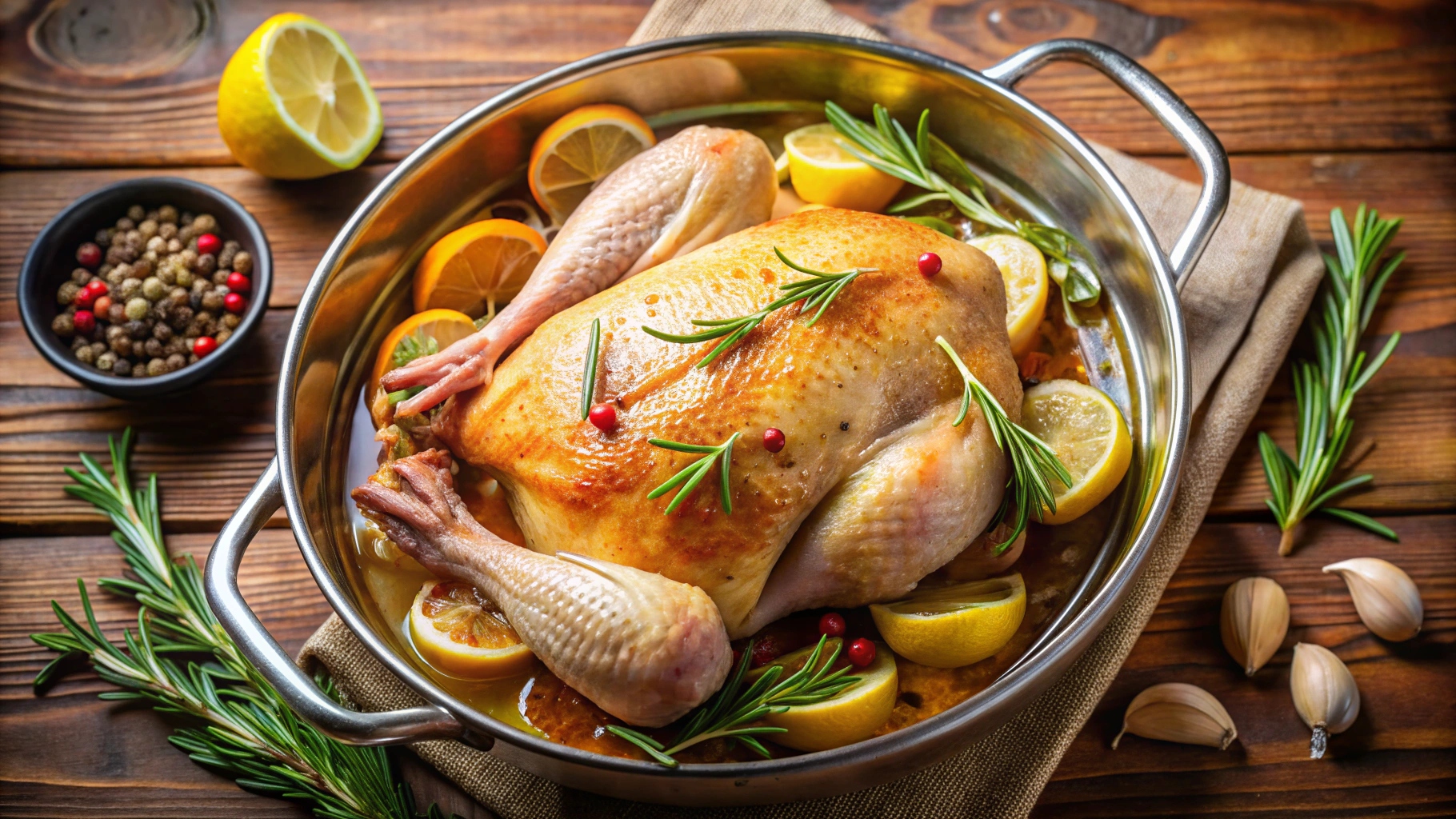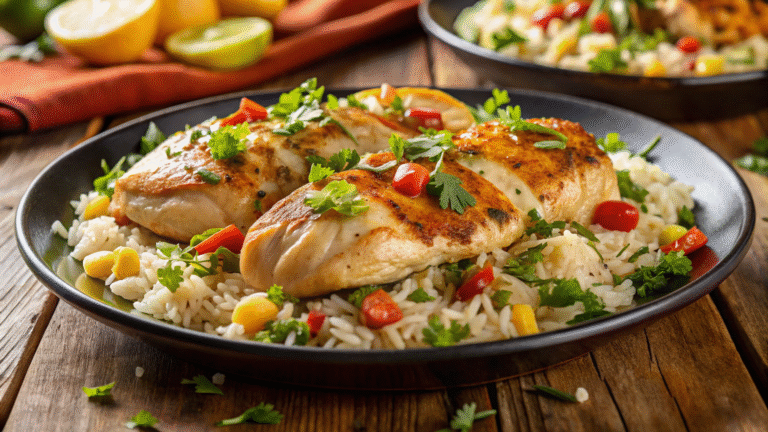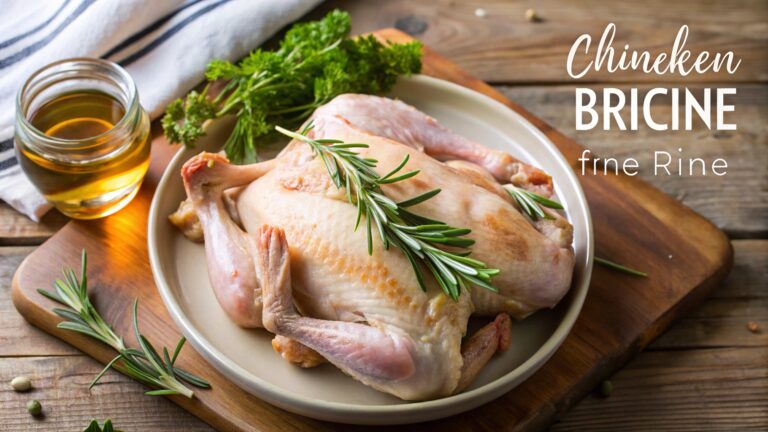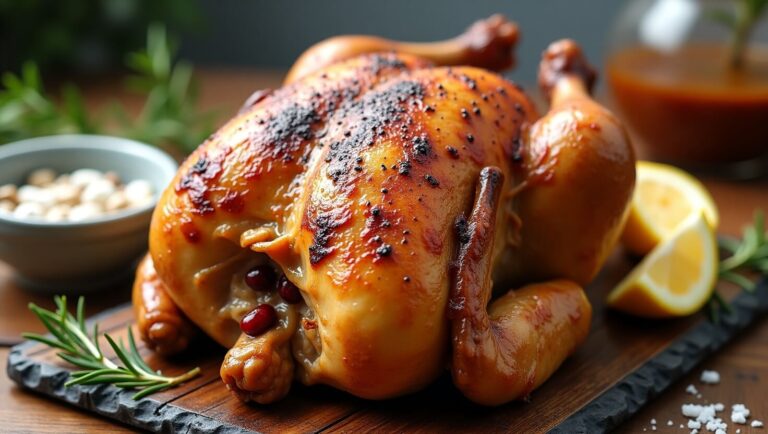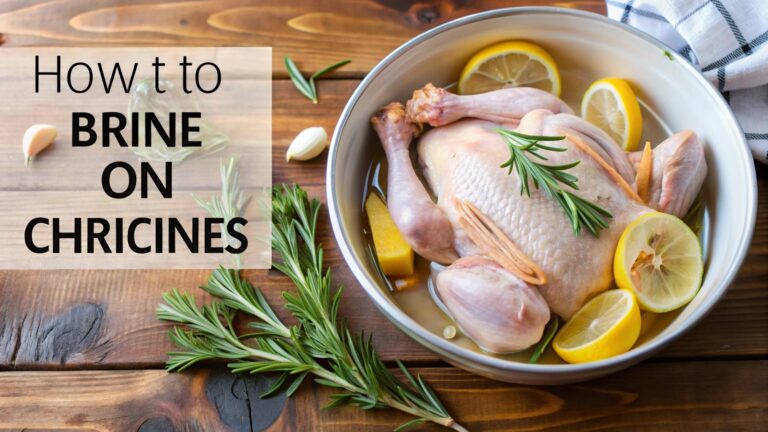What is Brining Chicken: 3 Salinity Secrets for Perfect Seasoning

Every great chef knows the secret to perfectly juicy chicken isn’t just about cooking technique—it’s about preparation. The art of what is brining chicken has transformed my kitchen. It turns dry, bland poultry into mouth-watering masterpieces.
Understanding the importance of brining chicken can elevate your cooking from ordinary to extraordinary. Imagine cutting into a chicken breast that’s packed with flavor. It’s tender throughout and so succulent it practically melts in your mouth. This isn’t a culinary fantasy—it’s the magic of proper brining.
Brining isn’t just a cooking trick; it’s a scientifically proven method to enhance meat quality. By soaking chicken in a saltwater solution, you’re fundamentally transforming its cellular structure. This ensures every bite is infused with moisture and seasoning.
Key Takeaways
- Brining dramatically improves chicken’s moisture and flavor
- The process works by breaking down protein structures
- Both wet and dry brining techniques exist
- Proper brining prevents dry, tough chicken
- Salt is the critical ingredient in successful brining
Understanding Brining: An Overview
Brining chicken is a cooking method that makes ordinary poultry taste amazing. It’s more than just seasoning. It’s about the science of making food taste better.
So, what is brining chicken? Simply put, it’s soaking meat in saltwater to make it juicier and tastier. This method is important because it changes the meat’s texture and flavor in a special way.
The Science of Salt and Moisture
The brining process uses a cool science called osmosis. Here’s what happens when you soak chicken in saltwater:
- Salt breaks down protein structures
- Water molecules penetrate the meat’s cells
- Muscle fibers become more relaxed
Why Chicken Lovers Brine
Chicken lovers brine for good reasons:
- It keeps the chicken moist
- It spreads flavors evenly
- It makes the meat tender
Learning about brining chicken opens up a world of cooking skills. It takes your cooking from good to great.
| Brining Benefit | Impact on Chicken |
|---|---|
| Moisture Retention | Up to 40% more juicy |
| Flavor Penetration | Seasoning reaches deeper into meat |
| Texture Improvement | Softer, more tender chicken |
Brining chicken is more than just seasoning. It’s a cooking technique that makes food taste amazing every time.
The Benefits of Brining Chicken
Brining chicken can change how you cook and make your meals better. It’s a technique that brings many benefits, making it great for both home cooks and chefs.
Brining chicken has many advantages that improve your cooking. Let’s look at the main benefits that make it stand out.
Improved Flavor and Juiciness
Brining chicken opens up a world of flavor. The salt solution makes the meat juicy. It also lets seasonings get deep into the meat, making every bite delicious.
- Prevents dry, tough meat during cooking
- Increases moisture retention by up to 30%
- Distributes seasonings more evenly throughout the chicken
Enhanced Texture and Tenderness
Brining changes chicken’s texture. The salt softens the meat, making it tender. It’s especially good for lean cuts that can dry out fast.
- Softens muscle proteins
- Reduces muscle fiber tightening
- Creates a more appealing meat texture
Seasoning Throughout
Brining makes sure flavor goes all the way through the chicken. You get a consistent taste from start to finish. It turns simple meat into a dish to remember.
Brining is like giving your chicken a flavor passport – allowing seasonings to travel everywhere!
Common Brining Methods for Chicken
Learning the right brining techniques can change your cooking game. Knowing how to brine chicken is key to making it juicy and delicious. This will wow even the pickiest eaters.
Brining chicken uses two main methods: wet brining and dry brining. Each method has its own benefits for making chicken tender and tasty.
Wet Brining Techniques
Wet brining is a traditional method. It involves soaking chicken in a saltwater solution. Your brine mix usually includes:
- Cold water
- Kosher salt
- Optional herbs and spices
- Sugar (for balanced flavor)
Dry Brining Explained
Dry brining is a different way to brine chicken. It involves:
- Applying salt directly to chicken skin
- Letting the meat rest uncovered in the fridge
- Allowing salt to tenderize the meat
Time Considerations for Brining
Timing is important in brining chicken. The time needed varies based on the chicken cut and method:
| Chicken Type | Wet Brining Time | Dry Brining Time |
|---|---|---|
| Whole Chicken | 8-12 hours | 4-6 hours |
| Chicken Breasts | 2-4 hours | 1-2 hours |
| Chicken Thighs | 4-6 hours | 2-3 hours |
Pro tip: Always refrigerate chicken during brining to keep it safe and get the best results.
Comparing Brined vs Non-Brined Chicken
Brining chicken can change how you cook and enjoy it. Knowing the differences between brined and non-brined chicken helps you cook better. It makes your meals more delicious.

How you prepare chicken affects its taste and quality. Let’s look at the main differences between brined and non-brined chicken.
Flavor Differences
Brined chicken tastes richer and more complex than non-brined chicken. The salt solution gets into the meat, making flavors spread evenly.
- Brined chicken: Rich, well-distributed flavor
- Non-brined chicken: Surface-level seasoning
- Brining enhances natural meat taste
Texture and Moisture Comparison
Brined chicken is juicier and softer than non-brined chicken. Brining keeps the meat moist and tender.
| Characteristic | Brined Chicken | Non-Brined Chicken |
|---|---|---|
| Moisture Content | Higher water retention | Lower moisture levels |
| Meat Texture | Tender and succulent | Potentially drier |
Understanding these differences helps you pick the right cooking method. This ensures your chicken turns out just how you want it.
How to Brine Chicken
Learning how to brine chicken can make your cooking better. It makes your meat juicy and full of flavor. Brining is a simple method that boosts the taste and texture of your chicken dishes.
To brine chicken well, you need to know a few things. The brining recipe is easy, but you must be precise.
Basic Brining Recipe
Here’s what you need for a basic brine:
- 4 cups cold water
- 1/4 cup kosher salt
- Optional: 2 tablespoons sugar
- Herbs and spices (like peppercorns, bay leaves)
Tips for Successful Brining
- Use cold water to prevent bacterial growth
- Refrigerate during brining process
- Pat chicken dry before cooking
- Adjust salt quantities based on chicken size
Common Mistakes to Avoid
Here are some common mistakes to avoid when brining chicken:
- Over-brining can make meat too salty
- Using table salt instead of kosher salt
- Not rinsing chicken before cooking
- Brining at room temperature
By avoiding these mistakes, you’ll get perfectly brined chicken. It will be tender, juicy, and full of flavor.
Types of Ingredients Used in Brining
Creating the best brine for chicken means picking the right ingredients. These ingredients boost flavor, moisture, and taste. The right mix can turn a simple chicken dish into a masterpiece.
Choosing the right ingredients is key to a great brine. Each part adds to the flavor depth of your chicken.
Salt Choices: The Foundation of Brining
Choosing the right salt is crucial for a great chicken brine. Different salts have unique qualities:
- Kosher salt: Ideal for brining due to its clean, pure flavor
- Sea salt: Provides mineral-rich depth
- Table salt: Works but may contain anti-caking agents
Flavor Enhancers: Herbs and Spices
Add depth to your chicken brine with herbs and spices. Here are some great options:
- Rosemary and thyme for earthy notes
- Peppercorns for subtle heat
- Garlic and onion powder for savory undertones
Sweeteners and Acids in Brining
Using sweeteners and acids is important for balance. Brown sugar adds caramelization, while apple cider vinegar brings tanginess and tenderizes the meat.
Try different mixes to find your ideal chicken brine. The best brine is a personal touch that grows with practice and creativity.
Cooking Brined Chicken
Cooking brined chicken needs special care for the best taste. Knowing how brining changes cooking helps make dishes juicy and flavorful.
When brining chicken, cooking methods must change. Brined chicken cooks faster and more evenly. So, watch your cooking closely.
Best Cooking Methods for Brined Chicken
- Roasting: Use a lower temperature (around 325°F) to prevent over-browning
- Grilling: Watch for faster cooking times and reduced risk of drying out
- Baking: Reduce standard cooking time by 20-25%
- Pan-frying: Use medium heat to maintain moisture
Cooking Time Adjustments
Brined meat cooks 20-25% faster than unbrined. Always use a meat thermometer to ensure proper internal temperature instead of just cooking time.
Cooking Technique Modifications
Brining makes chicken tender and heat-friendly. Cook at lower temperatures and for shorter times. This keeps the meat moist.
Pro tip: Let brined chicken rest for 10-15 minutes after cooking to redistribute internal juices and maximize tenderness.
Alternatives to Brining Chicken
Not everyone has time or resources for traditional brining. Luckily, there are several alternatives to make chicken flavorful and moist without much prep.

Brining is great for chicken, but there are other ways to get similar results. Knowing these alternatives can help you make tasty meals, even when you can’t brine.
Exploring Marinades as a Flavor Solution
Marinades are a quick and effective way to add flavor and moisture to chicken. They work faster than brining and need less prep. Marinades can:
- Add depth of flavor
- Help retain moisture
- Tenderize the meat
Dry Rubs: A Flavor-Packed Alternative
Dry rubs are another great way to enhance chicken’s taste. These spice blends create a flavorful crust and help keep juices in. Dry rubs are especially good for grilling and roasting.
Additional Moisture Retention Techniques
Looking for brining alternatives? Try these methods to keep chicken moist:
- Cook at lower temperatures
- Use bone-in, skin-on chicken cuts
- Let meat rest after cooking
- Baste during cooking
These techniques each have their own benefits for keeping chicken juicy and flavorful. They offer flexible options for home cooks who want great results without brining.
Frequently Asked Questions About Brining Chicken
Brining chicken might seem tricky, but knowing the basics can make it easy. Many home cooks wonder about the process, safety, and how long to brine chicken. Let’s dive into some key tips to improve your cooking skills.
Timing is key when brining chicken. Experts say to brine whole chickens for 8-12 hours and chicken parts for 2-4 hours. Smaller pieces like boneless breasts need only 30-60 minutes. The amount of salt and the chicken’s size affect the brining time, so it’s important to follow your recipe closely.
Food safety is crucial when brining chicken. Always keep the chicken cold during brining and use clean tools. Don’t let chicken sit at room temperature for too long. Rinse it before cooking to avoid too much salt. Make sure it reaches 165°F to kill bacteria.
Brining too long can make chicken too salty and mushy. Be careful with the brining time and adjust it for different cuts and recipes. With practice, you’ll get the hang of brining for perfectly juicy chicken every time.

